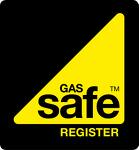|
01243 841464
|
The Properties of Asbestos and its Affects on HealthProperties: Asbestos is the name given to a group of naturally occurring fibrous minerals. It can come in several types, however the following are the most common types used within industry:
The groups of asbestos fibres differ in their mechanical and chemical properties. The different types of asbestos can be found on their own or as a mixture with any other of the fibres. They cannot usually be identified by their colour alone. Where asbestos is affected by heat and chemicals or is combined with other substances, its colour and appearance can easily change. The supply, importation and use of blue and brown asbestos was totally banned within the U.K. in 1985, with a general ban on white asbestos following in 1999 (there were slight exceptions for the specialist use of white asbestos, however a total ban came on 01/01/2005). Work with asbestos can release small fibres into the air. Although the body will get rid of most of the larger fibres that can enter the nose and mouth, tiny fibres can pass into the lower parts of the lung. They can stay there for years and in some cases work their way through the lung lining. The body naturally gets rid of any asbestos fibres that you might take in with food and water. Asbestos fibres cannot be absorbed through your skin. Health Affects:Breathing in asbestos fibres can eventually lead to a number of fatal diseases/conditions:
Working with asbestos can lead to an increased risk of developing lung cancer. Smoking can increase this risk further. These two risk factors combined appear to have an effect that is greater than the sum of the individual increases of risk from smoking or asbestos exposure alone. Ex-smokers have been shown to be at a significantly lower excess risk than current smokers. There are no known cures for asbestos-related diseases and they will generally appear many years after first exposure, which can vary between 15 and 60 years. The symptoms may include:
There are approximately 3500 deaths a year due to asbestos related diseases. If asbestos containing material is intact and in a position where it cannot easily be damaged, it will not pose a risk to health by releasing fibres into the air. Many of the people currently suffering from asbestos related diseases formally worked in the building trade. They were exposed to asbestos fibres in their day to day work with asbestos containing materials or because work with asbestos was carried out near them. Therefore, take note of the following guidance and take the necessary action if you suspect that you are working on or near asbestos containing materials. The Types, Uses and likely Occurrence of Asbestos and ACM’s in Buildings and Plant Although asbestos should have not been used as a new building material in any form since at least 1999, many thousands of tonnes of it were used in buildings in the past. A large amount of asbestos is still out there and you cannot easily identify it from its appearance. Asbestos is likely to be in a building if:
But you also need to bear in mind that asbestos cement has also been widely used as a building material since the 1950s. Some ACMs are more vulnerable to damage and more likely to give off fibres than others. In general, the materials which contain a high percentage of asbestos are more easily damaged. The list below is roughly in order of ease of fibre release (with the highest potential fibre release first). Sprayed coatings, lagging and insulating board are more likely to contain blue or brown asbestos. Asbestos insulation and lagging can contain up to 85% asbestos and are most likely to give off fibres. Work with asbestos insulating board can result in equally high fibre release if power tools are used. On the other hand, asbestos cement contains only 10%-15% asbestos. The asbestos is tightly bound into the cement and the material will only give off fibres if it is You are most likely to come across asbestos in these materials:
Remember, although these are the most likely uses and places where asbestos will be found, asbestos was used in many other materials. If you are in doubt, it is safer to presume that a material contains asbestos, unless there is strong evidence that it does not. The General Procedures to be Followed to Deal with an Emergency e.g. an uncontrolled release of asbestos dust into the workplace In any circumstance where there is an accidental discovery or uncontrolled release of asbestos into the workplace then measures, including emergency procedures, should be in place to limit exposure and the risks to health. Such procedures should include means to raise the alarm and procedures for evacuation, which should be tested and practised at regular intervals. The cause of the uncontrolled release should be identified, and adequate control regained as soon as possible. The following steps should be followed if an un-damaged asbestos containing material is discovered during a working process: Procedure 1
However if you discover an ACM in a bad condition or actually damage the ACM during the work activity, the following procedures will need to be followed: Procedure 2
Step 3 of Procedure 1 and step 7 of Procedure 2 will require that you contact the site foreman as soon as possible. The site foreman will then contact head office and the site contact to inform them of the discovery and the procedures that had been followed. Head office will then arrange with the client to arrange for a sample to be analysed and the work area to be cleaned up if necessary. No-one will be allowed to re-enter the contaminated area for any reason until a clearance/re-occupation certificate has been issued to the client by the appropriate asbestos analysing/air monitoring company. How to Avoid Risks from AsbestosThere are some simple procedures to be followed in order to help reduce the risk of employees coming into contact with asbestos. Owners and occupiers of non-domestic premises, who have maintenance and repair responsibilities for those premises, have a duty under the Control of Asbestos Regulations 2006 to assess the premises for the presence of asbestos and the condition of that asbestos (this duty has been enforced since 21st November 2004 under the CAW 2002). Where asbestos is present the dutyholder must ensure that the risk from the asbestos is assessed, that a written plan identifying where that asbestos is located is prepared and that measures to manage the risk from the asbestos are set out in that plan and are implemented. If the non-domestic premise does contain asbestos containing materials there is no legal requirement for the asbestos to be removed. The owner/occupier will need to assess the condition of the product and then decide whether they will remove it or whether it will stay in place. If the ACM does stay in place the duty holder will need to ensure that it is either in a good condition or alternatively arrange for the product to be enclosed/sealed/encapsulated or repaired. Therefore, before any work takes place on site, the site foreman or senior operative will request to see the Asbestos register for that site (please note, not all sites will have a register, please see section 1 below). The register will provide information on the location and condition of any asbestos containing material on that site. If the register details that asbestos containing material is present in the area that you are scheduled to work in, the site foreman/senior operative will contact head office for further confirmation on whether the work is to continue or whether alterations are to be made to the safe systems of work which were to be followed. Section 1 Not all sites will have an asbestos register, this could be the case in a number of situations; 1. The site is too young for it to contain asbestos e.g. it was built after 1999, If a site falls under category 1 or 2, please err on the side of caution. There could be situations where a building contractor may have installed ACMs that they still had in stock. Therefore, if you do come across a suspect material, follow procedures 1 or 2. If a site falls under situation 3, ask for written confirmation/evidence that the asbestos has been removed by a licensed contractor. ConclusionAll exposures to asbestos should be avoided, however, that does not mean that you should necessarily worry about a one-off exposure. From time to time, accidental exposures to asbestos may occur and can be a cause of much concern and distress to the individuals concerned. Your risk of developing an asbestos-related disease depends how much asbestos you are exposed to, for how long and on how many different occasions. A one-off short-term exposure is unlikely to be of concern, but each time you are exposed, the risk increases a little bit more. Think of this like smoking. The more times you smoke, the greater your risk of developing cancer. If in doubt: STOP WORK, CLOSE AREA OFF AND NOTIFY PERSON IN CHARGE. |
|
|
|





